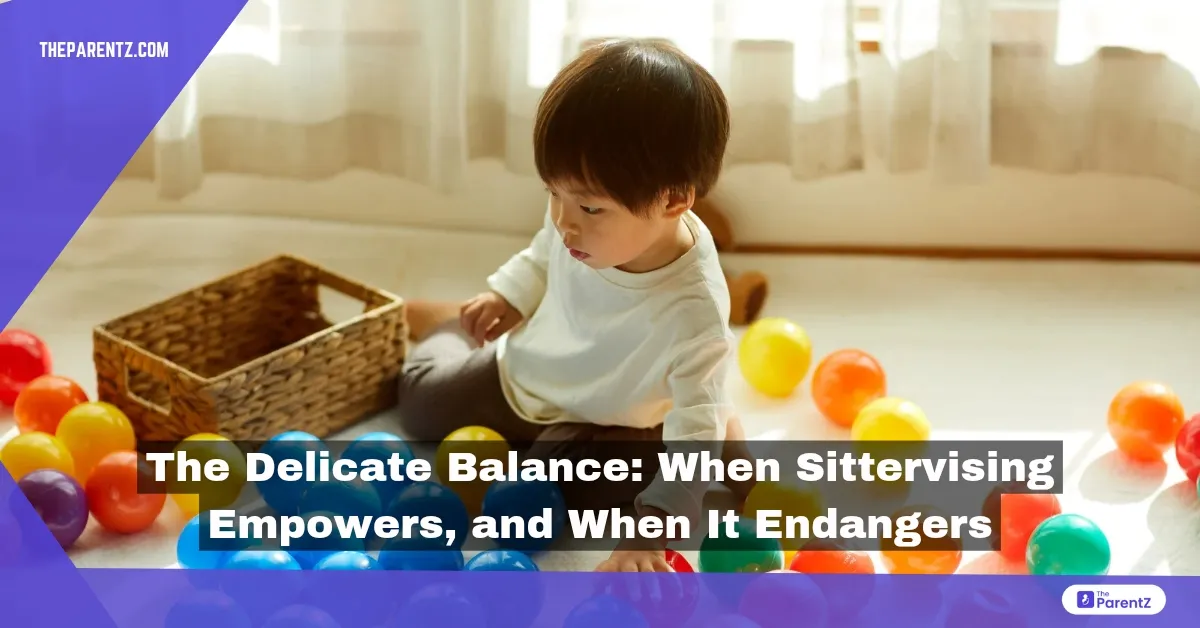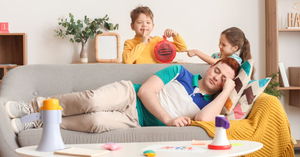Remember the days when parents were expected to be either constantly hovering or completely hands-off? Those exhausting extremes of parenting are giving way to a more nuanced approach that's capturing the attention of modern parents everywhere. Welcome to the world of "sittervising" - a parenting strategy that's part watchful guardian, part supportive coach, and entirely about finding that sweet spot of supervision.
What is Sittervising?
Imagine this: you're sitting comfortably on the couch, keeping a watchful eye on your child playing nearby, but you're not hovering or micromanaging their every move. That's sittervising in a nutshell. It's a parenting approach that strikes a balance between being present and giving children the space to explore, learn, and develop independence. This approach acknowledges that children need time to explore and engage in solitary play without adult interference.
Why is Sittervising Trending?
The rise of sittervising isn't random. It's a response to years of overprotective parenting and the growing understanding that children need room to develop critical life skills. Social media, particularly platforms like TikTok, has amplified this concept, with parents sharing their experiences and strategies.
Several factors contribute to its popularity:
- Increased awareness of child development
- Recognition that constant intervention can hinder a child's problem-solving skills
- The practical reality of parents who need to manage multiple responsibilities
- A shift towards more balanced parenting approaches
The Sweet Spot: When Sittervising Works Perfectly
Let's dive into scenarios where sittervising is not just acceptable but truly beneficial:
1. Outdoor Play Areas
Picture a playground or backyard. Your child is playing, and you're nearby - maybe on a bench or lawn chair. You're close enough to intervene if something dangerous happens but far enough to let them navigate social interactions, test physical boundaries, and build confidence.
2. Indoor Creative Play
When your child is engaged in art, building blocks, or imaginative play, sittervising allows them to develop creativity without constant interruption. You're present, observing, but not directing every moment of play.
3. Learning Household Tasks
Watching your child attempt to help with simple chores - like sorting laundry or setting the table - is a perfect sittervising moment. You're nearby to guide and ensure safety, but letting them learn through experience.
Treading Carefully: When Sittervising Becomes Risky
Not all situations are created equal. Here are scenarios where sittervising requires extra caution:
1. Very Young Children
Toddlers and infants require much closer supervision. The line between sittervising and neglect can be thin with very young children who can't yet understand potential dangers.
2. Potentially Dangerous Environments
Swimming pools, busy streets, or areas with sharp objects or potential hazards demand more than passive observation. Sittervising here could put a child at serious risk.
3. Children with Special Needs
Some children require more direct supervision due to specific developmental or health considerations. Sittervising might not be appropriate in these cases.
Striking the Right Balance
To make sittervising effective while safeguarding against its pitfalls, parents should consider the following:
- Assess Individual Needs: Every child is different; some may thrive on independent play while others may require more interaction. Tailoring your approach based on your child's personality is key.
- Create Safe Play Environments: Ensure that the area where your child plays independently is safe and free from hazards. This allows you to relax while they explore.
- Engage Regularly: Balance sittervising with active engagement during playtime. Set aside moments throughout the day when you can join in on activities or initiate guided play.
- Communicate Openly: Talk to your child about the importance of independent play and reassure them that you are nearby if they need anything.
Sittervising isn't about being a perfect parent. It's about finding a middle ground between helicopter parenting and complete detachment. It's recognizing that children need space to grow, learn, and make mistakes - with a safety net nearby.
In conclusion, sittervising offers an innovative approach to parenting that empowers both children and parents alike when practiced mindfully. By understanding when it works best and when it might pose risks, families can embrace this trend while ensuring that children's developmental needs are met alongside their own well-being as caregivers.








Be the first one to comment on this story.